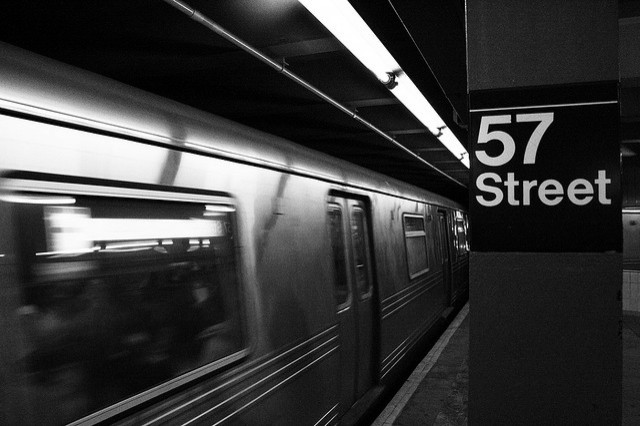NYC Subway Gas Test Commences: Simulated Chemical Attack To Help Emergency Response

New Yorkers: if the breeze in the subway tunnel seemed a little different on your commute Tuesday morning, don’t worry. The invisible gases around you are merely part of a simulated chemical attack, not a real one.
Scientists from Brookhaven National Laboratory, Argonne National Laboratory and Los Alamos National Laboratory, working in concert with the NYPD, released harmless gases in subway stations and on the street early Tuesday morning. By tracking the movement of the tracer gases above and below ground, officials can get an idea of how emergency response systems should react in a more dangerous situation. Commuters may notice air sample collection boxes in subway stations, on streetlamps, and being carried around by researchers.
“If an industrial accident or a terrorist act resulted in the release of dangerous contaminants into the atmosphere in New York City or in its subway system, the city’s first responders would have to decide quickly whether people should shelter in place or be evacuated, and what evacuation routes should be considered,” BNL says on its website describing the project, called the Subway-Surface Air Flow Exchange Study, or S-SAFE.
S-SAFE was announced this past April. The project is funded by a $3.4 million grant from the Department of Homeland Security.
The gases used are called perfluorocarbon tracer gases, and aren't hazardous to human health or the environment. They're chemically inactive, odorless, colorless, and made from a compound of the elements carbon and fluorine. Scientists will be using only very small amounts of PFCs, equivalent to about a drop or two of water in a full bathtub. PFC compounds have been used since the 1970s in studies of atmospheric dispersion, as well as to detect leaks in natural gas pipes and electric transmission lines.
PFCs also have a history of medical uses. Doctors use liquid PFC to help premature babies breathe, and they’re also used in eye surgery, often to help hold the retina in place.
Scientists conducted a similar airflow modeling test in Manhattan in 2005, focusing on how dispersants might move around among New York’s urban canyons. Other subway systems in Boston and Washington, D.C. have also been tested, but the current study is the largest and most complex yet.
The results from S-SAFE may relate to other hazards besides chemical attacks or accidents – knowing how air flows through the subways could help first responders understand how smoke from fires might move through the tunnels and stations. Two more days of S-SAFE tests are scheduled for July. The days of the next tests aren't yet determined (and are largely dependent on weather). For updates on when the next airflow test might be, keep an eye on the BNL’s S-SAFE website.
© Copyright IBTimes 2024. All rights reserved.





















